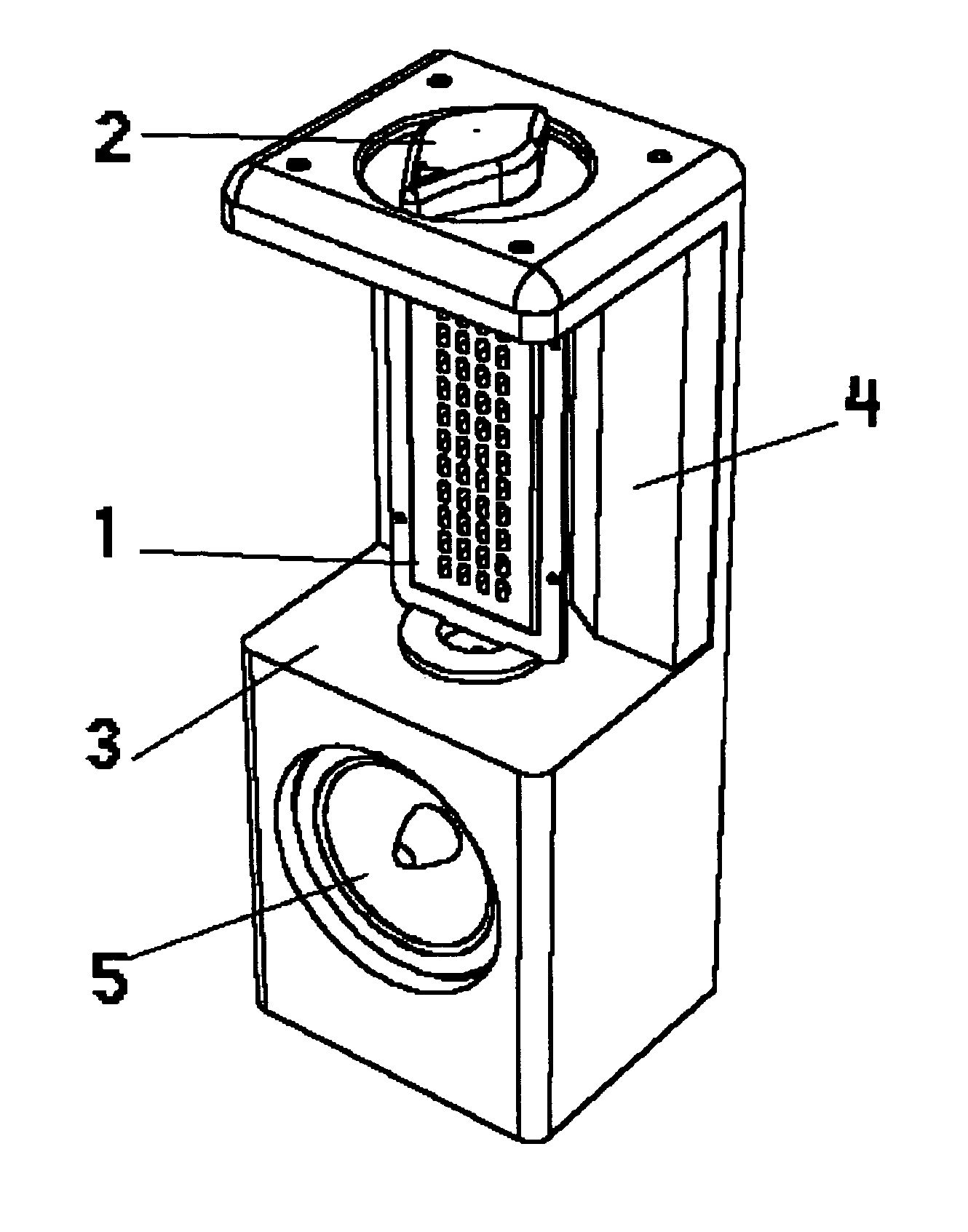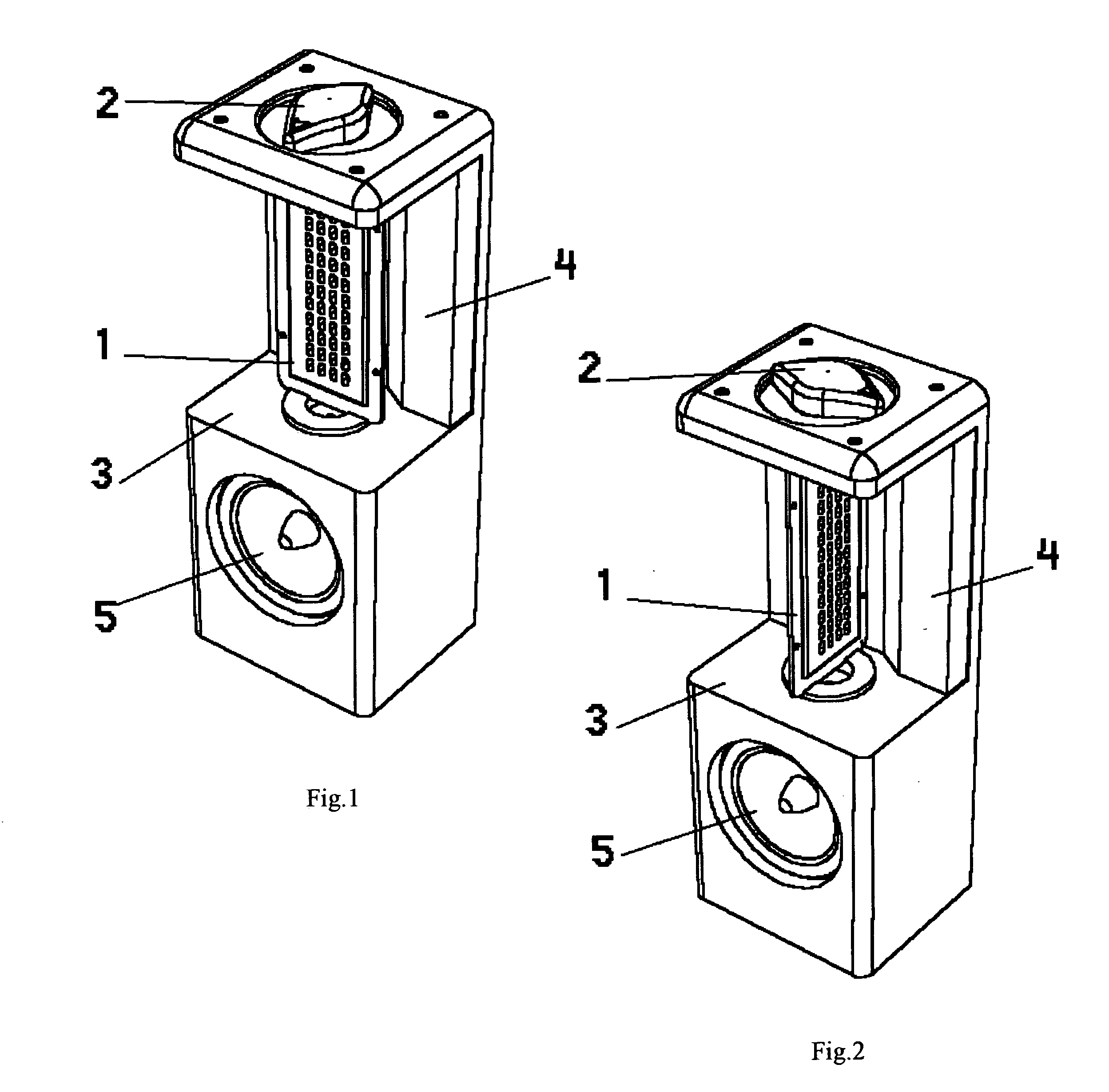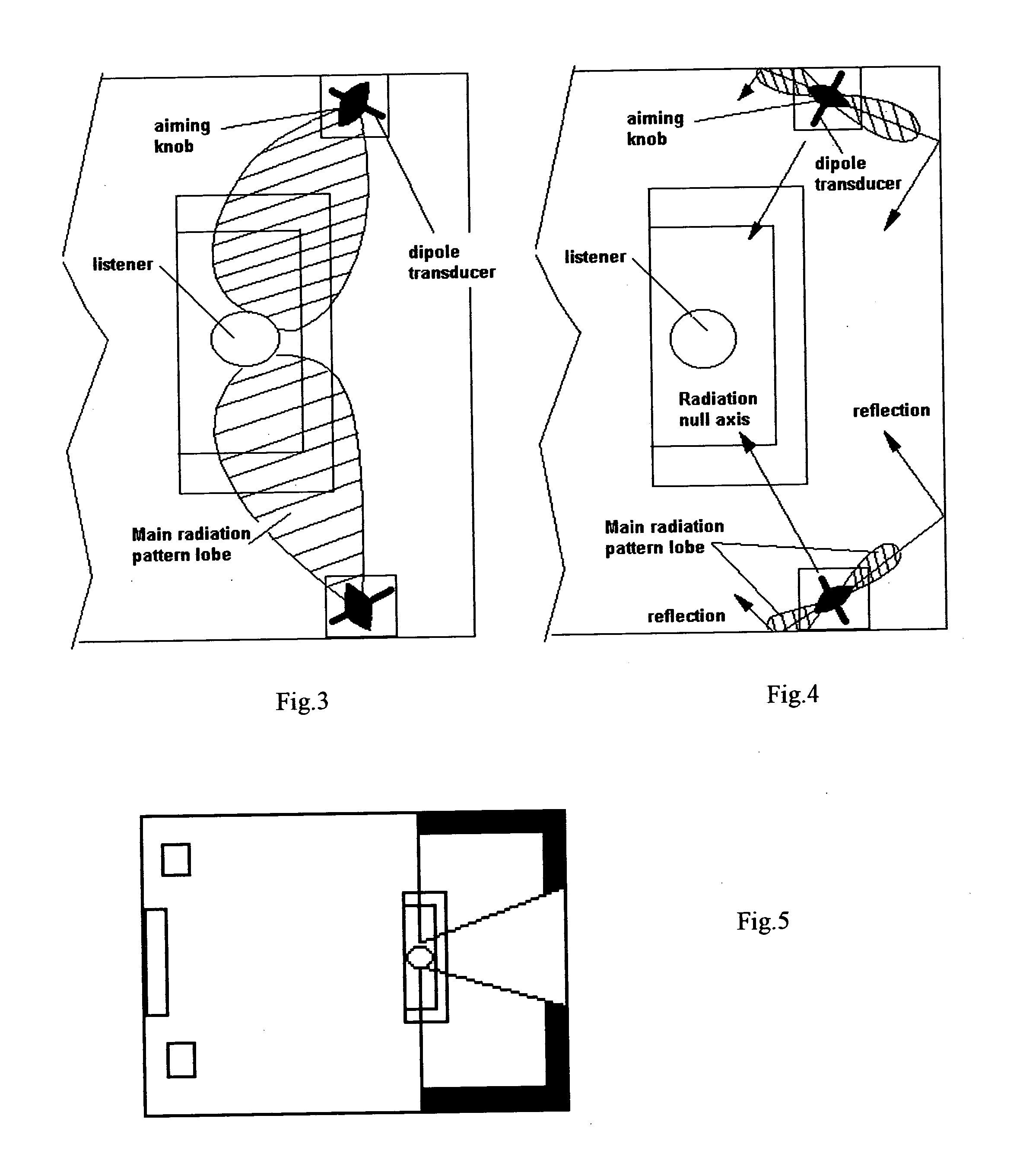Loudspeaker with variable radiation pattern
a loudspeaker and radiation pattern technology, applied in the direction of transducer types, frequency/directions obtaining arrangements, loudspeaker spatial/constructional arrangements, etc., can solve the problem of difficult or impossible for the listener to localize any of the acoustic signals, delay circuitry (typically requiring a separate component) is relatively expensive and noisy, and the listener is difficult or impossible to localize the sound
- Summary
- Abstract
- Description
- Claims
- Application Information
AI Technical Summary
Benefits of technology
Problems solved by technology
Method used
Image
Examples
Embodiment Construction
[0035] The current situation with rear channel loudspeakers in home theater and multi-channel audio has a confusing element for a user. Surround sound audio in its recent reincarnation was first boosted by consumer version of Dolby Surround systems for movies and special THX processing algorithm developed for consumer home theater systems. The idea is to transfer the movie theater audio experience into a home environment. According to THX recommendations the home theater system should have at least 5 audio channels, frontal left, frontal center, frontal right and two surround sound channels located to the rear of the listening position. While frontal channels specify mostly direct radiating loudspeakers, the rear channels according THX should produce predominantly diffuse sound. Dipole speakers aimed at the listener with their “nulls” are preferred in order to recreate the ambient sound field and envelopment as intended by movie mix producers. With advent of multi-channel music-only...
PUM
 Login to View More
Login to View More Abstract
Description
Claims
Application Information
 Login to View More
Login to View More - R&D
- Intellectual Property
- Life Sciences
- Materials
- Tech Scout
- Unparalleled Data Quality
- Higher Quality Content
- 60% Fewer Hallucinations
Browse by: Latest US Patents, China's latest patents, Technical Efficacy Thesaurus, Application Domain, Technology Topic, Popular Technical Reports.
© 2025 PatSnap. All rights reserved.Legal|Privacy policy|Modern Slavery Act Transparency Statement|Sitemap|About US| Contact US: help@patsnap.com



